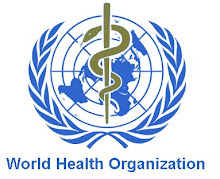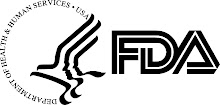THE NEW INFLUENZA: What is A(H1N1)?
This is a new influenza A (H1N1) virus that has never before circulated among humans. This virus is not related to previous or current human seasonal influenza viruses.
How do people become infected with the virus?
The virus is spread from person-to-person. It is transmitted as easily as the normal seasonal flu and can be passed to other people by exposure to infected droplets expelled by coughing or sneezing that can be inhaled, or that can contaminate hands or surfaces. To prevent spread, people who are ill should cover their mouth and nose when coughing or sneezing, stay home when they are unwell, clean their hands regularly, and keep some distance from healthy people, as much as possible. There are no known instances of people getting infected by exposure to pigs or other animals. The place of origin of the virus is unknown.
What are the signs and symptoms of infection?
Signs of influenza A (H1N1) are flu-like, including fever, cough, headache, muscle and joint pain, sore throat and runny nose, and sometimes vomiting and diarrhoea.
Why are we so worried about this flu when hundreds of thousands die every year from seasonal epidemics?
Seasonal influenza occurs every year and the viruses change each year - but many people have some immunity to the circulating virus which helps limit infections. Some countries also use seasonal influenza vaccines to reduce illness and deaths. But influenza A (H1N1) is a new virus and one to which most people have no or little immunity and, therefore, this virus could cause more infections than are seen with seasonal flu. WHO is working closely with manufacturers to expedite the development of a safe and effective vaccine but it will be some months before it is available.
The new influenza A (H1N1) appears to be as contagious as seasonal influenza, and is spreading fast particularly among young people (from ages 10 to 45). The severity of the disease ranges from very mild symptoms to severe illnesses that can result in death. The majority of people who contract the virus experience the milder disease and recover without antiviral treatment or medical care. Of the more serious cases, more than half of hospitalized people had underlying health conditions or weak immune system
Most people experience mild illness and recover at home. When should someone seek medical care?
A person should seek medical care if they experience shortness of breath or difficulty breathing, or if a fever continues more than three days. For parents with a young child who is ill, seek medical care if a child has fast or labored breathing, continuing fever or convulsions (seizures). Supportive care at home - resting, drinking plenty of fluids and using a pain reliever for aches - is adequate for recovery in most cases. (A non-aspirin pain reliever should be used by children and young adults because of the risk of Reye's syndrome.)
Influenza (Seasonal)
KEY FACTS Influenza is an acute viral infection that spreads easily from person to person. Influenza circulates worldwide and can affect anybody in any age group. Influenza causes annual epidemics that peak during winter in temperate regions. Influenza is a serious public health problem that causes severe illnesses and deaths for higher risk populations. An epidemic can take an economic toll through lost workforce productivity, and strain health services. Vaccination is the most effective way to prevent infection.
Overview
Seasonal influenza is an acute viral infection caused by an influenza virus. There are three types of seasonal influenza – A, B and C. Type A influenza viruses are further typed into subtypes according to different kinds and combinations of virus surface proteins. Among many subtypes of influenza A viruses, currently influenza A (H1N1) and A (H3N2) subtypes are circulating among humans. Influenza viruses circulate in every part of the world. Type C influenza cases occur much less frequently than A and B. That is why only influenza A and B viruses are included in seasonal influenza vaccines.
Signs and symptoms Seasonal influenza is characterized by a sudden onset of high fever, cough (usually dry), headache, muscle and joint pain, severe malaise (feeling unwell), sore throat and runny nose. Most people recover from fever and other symptoms within a week without requiring medical attention. But influenza can cause severe illness or death in people at high risk (see below). The time from infection to illness, known as the incubation period, is about two days.
Who is at risk?
Yearly influenza epidemics can seriously affect all age groups, but the highest risk of complications occur among children younger than age two, adults age 65 or older, and people of any age with certain medical conditions, such as chronic heart, lung, kidney, liver, blood or metabolic diseases (such as diabetes), or weakened immune systems.
Transmission
Seasonal influenza spreads easily and can sweep through schools, nursing homes or businesses and towns. When an infected person coughs, infected droplets get into the air and another person can breath them in and be exposed. The virus can also be spread by hands infected with the virus. To prevent transmission, people should cover their mouth and nose with a tissue when coughing, and wash their hands regularly.
Treatment
Antiviral drugs for influenza are available in some countries and effectively prevent and treat the illness. There are two classes of such medicines, 1) adamantanes (amantadine and remantadine), and 2) inhibitors of influenza neuraminidase (oseltamivir and zanamivir). Some influenza viruses develop resistance to the antiviral medicines, limiting the effectiveness of treatment. WHO monitors antiviral susceptibility in the circulating influenza viruses.
Seasonal epidemics
Influenza epidemics occur yearly during autumn and winter in temperate regions. Illnesses result in hospitalizations and deaths mainly among high-risk groups (the very young, elderly or chronically ill). Worldwide, these annual epidemics result in about three to five million cases of severe illness, and about 250 000 to 500 000 deaths. Most deaths associated with influenza in industrialized countries occur among people age 65 or older. In some tropical countries, influenza viruses circulate throughout the year with one or two peaks during rainy seasons.
Disease effects
Influenza can cause serious public health and economic problems. In developed countries, epidemics can result in high levels of worker absenteeism and productivity losses. In communities, clinics and hospitals can be overwhelmed when large numbers of sick people appear for treatment during peak illness periods. While most people recover from a bout of influenza, there are large numbers of people who need hospital treatment and many who die from the disease every year. Little is known about the effects of influenza epidemics in developing countries.
Prevention
The most effective way to prevent the disease or severe outcomes from the illness is vaccination. Safe and effective vaccines have been available and used for more than 60 years. Among healthy adults, influenza vaccine can prevent 70% to 90% of influenza-specific illness. Among the elderly, the vaccine reduces severe illnesses and complications by up to 60%, and deaths by 80%.
Vaccination is especially important for people at higher risk of serious influenza complications, and for people who live with or care for high risk individuals. WHO recommends annual vaccination for (in order of priority): nursing-home residents (the elderly or disabled) elderly individuals people with chronic medical conditions other groups such as pregnant women, health care workers, those with essential functions in society, as well as children from ages six months to two years.
Influenza vaccination is most effective when circulating viruses are well-matched with vaccine viruses. Influenza viruses are constantly changing, and the WHO Global Influenza Surveillance Network (GISN), a partnership of National Influenza Centres around the world, monitors the influenza viruses circulating in humans. WHO annually recommends a vaccine composition that targets the three most representative strains in circulation. References Chlorine Dioxide (ClO2) is compound that acts as a strong oxidizer (as when a nail rust) to destroy specific bacteria and viruses. It seems that ClO2 attacks those cells that create their energy in the absence of oxygen (anaerobic cell) such as pathogenic (disease causing) viruses, bacteria and cancer cells. Most of our “healthy” cells use oxygen for energy so they remain relatively safe. Nerd’s Only Corner: Bacteria: ClO2 will become reduced (5e-) when it is in proximity to the bacteria‟s cell wall damaging it. ClO2 will so inhibit Nitrite Reductase activity, an enzyme needed for anaerobic respiration (same mechanism for cancer cells). Virus: ClO2 will penetrate the cell wall and will interrupt intracellular peptone production, a necessary intermediate in viral protein hydrolysis (creation of functional protein).
Effective Protection for Indoor Occupants Chlorine Dioxide concentration in gaseous process streams at percent levels to control the chlorine dioxide vapor concentrations. Concentration measurement in the gas phase is also important in industrial air disinfection. Organizations are seeking means to protect themselves, enhance their defenses and upgrade the preventive mechanisms in their indoor environment.
Organizations acknowledge that the need for a long-term barrier protection as a defensive strategy against the spread of the H1N1 virus is more important than ever. The best measure to take at this point of the outbreak is a “forward defense”, followed by thorough contamination and mitigation methods. Introduces multifold benefit programs and products that are proven decontamination solutions.
RENOVATIO's three forward defense mechanisms against Influenza A (H1N1) are:
• Highly sporicidal • Kills micro-organisms with extremely short contact time • Non-toxic in itself and in its residual by-products • Environmentally-friendly • Reverts over time to original state – weak saline solution • „Food-safe‟ • Can be applied as a foam, mist, ice or liquid solution to treat air, surfaces or liquids • Does not bleach surfaces or materials and virtually odorless • No synthetic chemical residue • It prevents and removes otherwise stubborn biofilm • It is extremely effective against Legionella • It does not form toxic chloramines • It does not form toxic trihalomethanes • It precipitates iron and manganese
Based on the active molecule quaternary ammonium, a highly effective and proven broad spectrum microbiocide molecule, RENOVATIO Disinfectant is not merely affixed to the treated surface. It is chemically bonded to the treated surface, making it a permanent part of that area and allowing it to have long-term protection by inhabiting the growth of pathogenic microorganisms in your indoor environment. Technology is safe for people and for the environment. It reduces the need of toxic chemicals because microbial pollutants are under control. Its fast, and reliable response makes the difference.
Reducing Exposure & Spread of H1N1 Effective Protection For Building Occupants Against Pandemic Threats & How UVC Can Help Spread of Infection in Modern Buildings • A typical ventilation • In 8 hours, a (10th floor) person would have system supplies 80% accumulated enough total exposure achieving re-circulated air for a 33% risk of contracting tuberculosis.
What’s Influenza A Virus & How does it infect people?
•Influenza A causes disease primarily in the lungs as it loves to infect the lower respiratory system. • •It is not a rhinovirus which primarily causes infection in the nose and upper respiratory system. • •Since your fingers can’t touch your lungs, washing your hands won’t likely prevent flu viruses from entering deep into your lungs. •NO matter how sterile your hands are, you’ll still be fully exposed to airborne Influenza viruses entering and depositing into your lungs to cause disease.
How does Influenza A Virus kill people?
• Influenza A likes to multiply at 98.6° which is the temperature of the lower respiratory system. (The upper respiratory system- nasal cavity & pharynx- are approx. 93° which rhinoviruses favor for multiplication). •Influenza A infects and destroys its victim‟s lung tissue. Damaged lung tissue has compromised its protective layers which can lead to pneumonia or massive bacterial infection. •Victims may die from aggressive Staph infections like Methicillin Resistant Staphylococcus Aureus (MRSA).
Here‟s a short list of Human Indoor Airborne Virus Transmission Issues:
1. How can people eject Flu Viruses into the Air? 2. What different forms can airborne viruses take? 3. How far can those viruses travel & how can they circulate within buildings and inside their HVAC units? 4. What conditions increase Airborne Flu Viruses Survival? 5. What Systems are available to kill Airborne Flu Viruses? For people who wear specs, vapour will keep forming on their lenses. The Paper Mask ... How to Care for a Person Who Has Contracted the Swine H1N1 Virus Flu viruses are spread mainly via respiratory secretions. Frequent hand-washing and avoiding close contact provide an important measure of protection, but these actions do not stop the spread of viral organisms that become airborne through coughing and sneezing
There are 4-5 air changes per hour in most commercial buildings
Energy Savings •Reduces exposure to viruses bacteria and moulds. •Maintenance Savings. •Actively kills airborne microbials in the occupied space & •Extends Efficiency / Life of HEPA filtration decontaminates surfaces 24/7. (log 4 kill) •Non-mechanical duct cleaning. • Odour Control •TM44 Compliance. •VOC Control •Reduces exposure to viruses bacteria and moulds. The survival of such aerosolized pathogens depends on environmental conditions such as temperature and relative humidity. Influenza Virus on relative Humidity and temperature. Long term exposure to dry air is likely to affect influenza viruses growth in the upper respiratory tract, and may indeed play a role in influenza seasonality. (Influenza) transmission was highly efficient at low relative humidity levels-20% or 35%.
Stabilized Chlorine Dioxide Proposed By Renovatio Resources
There is a lot of interest in Stabilized Chlorine Dioxide and Chlorine Dioxide lately and that interest has inspired a multitude of questions, like:
"Is there a difference between Stabilized Chlorine Dioxide and Chlorine Dioxide?" "What is the difference between Stabilized Chlorine Dioxide and Chlorine Dioxide?" "How safe is Stabilized Chlorine Dioxide?" "How does Stabilized Chlorine Dioxide work if it is "stabilized?" "How long will Stabilized Chlorine Dioxide keep?" "Is Stabilized Chlorine Dioxide corrosive?" "Which oral/dental and household products contain Stabilized Chlorine Dioxide?"
So, here we endeavor to provide some answers.
Stabilized Chlorine Dioxide differs from Chlorine Dioxide and is very safe. Chlorine Dioxide is a gas. Stabilized Chlorine Dioxide (SCD or Stabilized ClO2, and also known as Anthium Dioxide and Sodium Chlorite) is a salt form in solution with bicarbonate.
Stabilized Chlorine Dioxide is activated when it encounters microbes or bacteria. Our principal has performed several tests on substances that activate SCD. Bacteria themselves activate SCD, although slower than acids and other inorganic substances. After a person consumes a meal high in sugars and starches, invisible bacteria on the tooth surfaces and gums begin to feed on residual food particles. As the bacteria work, they secrete potent acids that dissolve the hard calcium and phosphate mineral matrix of the tooth enamel. These bacteria also produce metabolic enzymes that break down the connective tissues and gums. Without proper oral hygiene, these bacteria leave unhealthy cavities and stains, as well as, inflamed and bleeding gums. In addition to causing tooth decay, these same bacteria are responsible for the production of volatile sulfur compounds. Volatile sulfur compounds are byproducts of the bacterial fermentation of food residue and are one of the major sources of bad breath.
Stabilized Chlorine Dioxide is registered with the EPA (Environmental Protection Agency) as an excellent bactericide, fungicide and antimicrobial agent. The FDA (Food and Drug Administration) and the USDA (United States Department of Agriculture) have approved use of Stabilized Chlorine Dioxide in food processing plants for sanitizing and controlling bacteria and mold.
To make Stabilized Chlorine Dioxide, Chlorine Dioxide is taken and manufactured in a liquid state with the pH on the base side. Then various Sodium Carbonate complexes are added into the formulation. These complexes link up with and bond on the Chlorine Dioxide to stabilize it. It changes from an aggressive unstable material, to one that is extremely mild, very stable, and yet has all the desirable features that Chlorine Dioxide possesses.
Chlorine Dioxide is an unstable aggressive material that can damage mucus membranes in the mouth. Stabilized Chlorine Dioxide is very safe in comparison with other disinfectants. Stabilized Chlorine Dioxide is so safe that the EPA rates its toxicity level the same as water. It will not damage gums, even if they have been cut. It has no effect on fillings and possesses no harmful properties that a dentist should worry about. On the contrary, it is very effective on keeping the mouth extremely clean.
Stabilized Chlorine Dioxide was first developed to be used on cankers. So for soft delicate tissues where there may be problems with bacteria or other microbials, Stabilized Chlorine Dioxide is a superb product. It also breaks down the food films so that these organisms don't have anything to feed upon and grow and multiply. This would be very important when you look at potential infections.
Stabilized Chlorine Dioxide is safe in storage and use, and carries no hazardous label on personal care products. It is a latent form of Chlorine Dioxide, which permits, controlled release under conditions of use.









